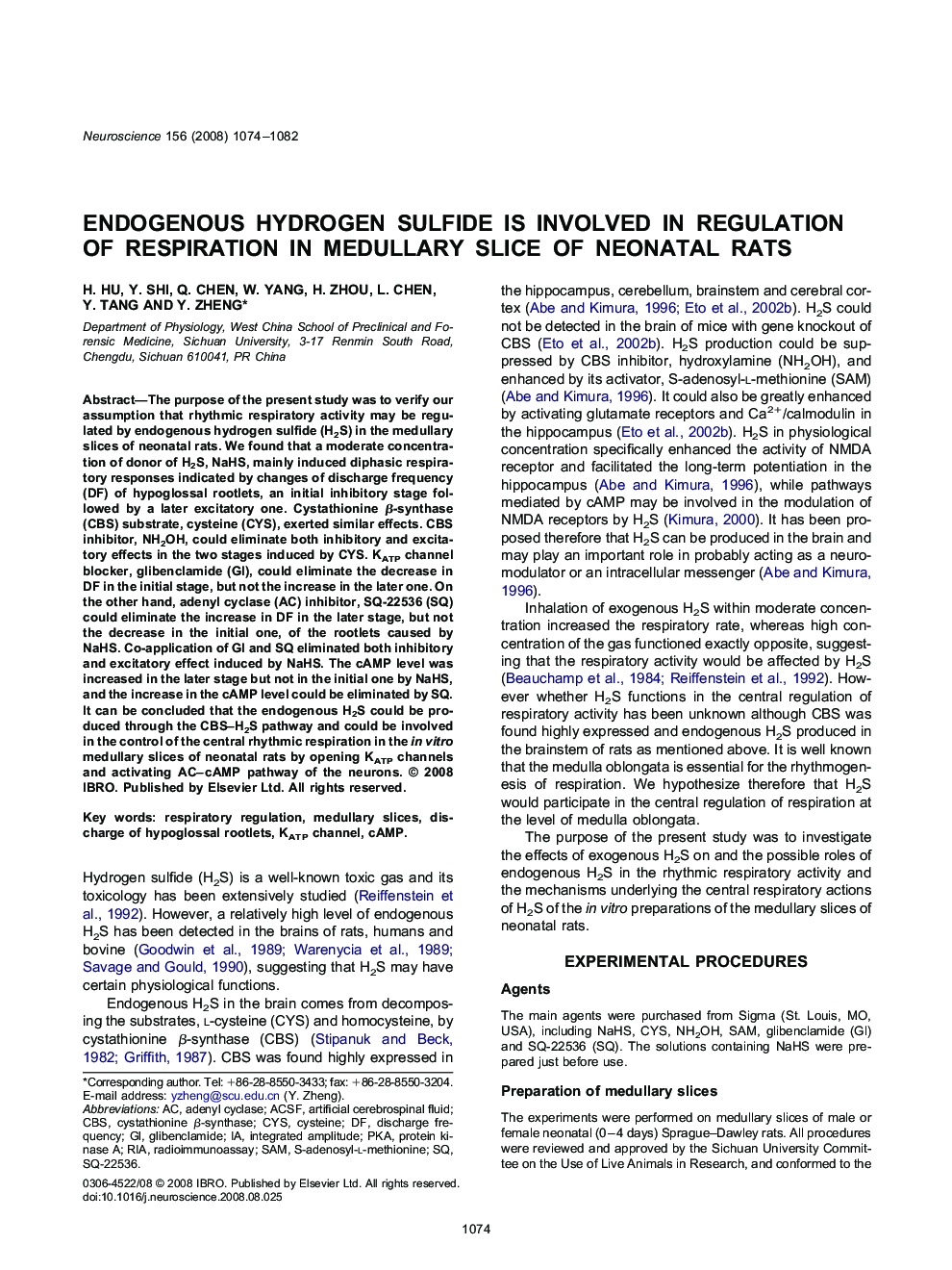| Article ID | Journal | Published Year | Pages | File Type |
|---|---|---|---|---|
| 4341373 | Neuroscience | 2008 | 9 Pages |
Abstract
The purpose of the present study was to verify our assumption that rhythmic respiratory activity may be regulated by endogenous hydrogen sulfide (H2S) in the medullary slices of neonatal rats. We found that a moderate concentration of donor of H2S, NaHS, mainly induced diphasic respiratory responses indicated by changes of discharge frequency (DF) of hypoglossal rootlets, an initial inhibitory stage followed by a later excitatory one. Cystathionine β-synthase (CBS) substrate, cysteine (CYS), exerted similar effects. CBS inhibitor, NH2OH, could eliminate both inhibitory and excitatory effects in the two stages induced by CYS. KATP channel blocker, glibenclamide (Gl), could eliminate the decrease in DF in the initial stage, but not the increase in the later one. On the other hand, adenyl cyclase (AC) inhibitor, SQ-22536 (SQ) could eliminate the increase in DF in the later stage, but not the decrease in the initial one, of the rootlets caused by NaHS. Co-application of Gl and SQ eliminated both inhibitory and excitatory effect induced by NaHS. The cAMP level was increased in the later stage but not in the initial one by NaHS, and the increase in the cAMP level could be eliminated by SQ. It can be concluded that the endogenous H2S could be produced through the CBS-H2S pathway and could be involved in the control of the central rhythmic respiration in the in vitro medullary slices of neonatal rats by opening KATP channels and activating AC-cAMP pathway of the neurons.
Keywords
Related Topics
Life Sciences
Neuroscience
Neuroscience (General)
Authors
H. Hu, Y. Shi, Q. Chen, W. Yang, H. Zhou, L. Chen, Y. Tang, Y. Zheng,
